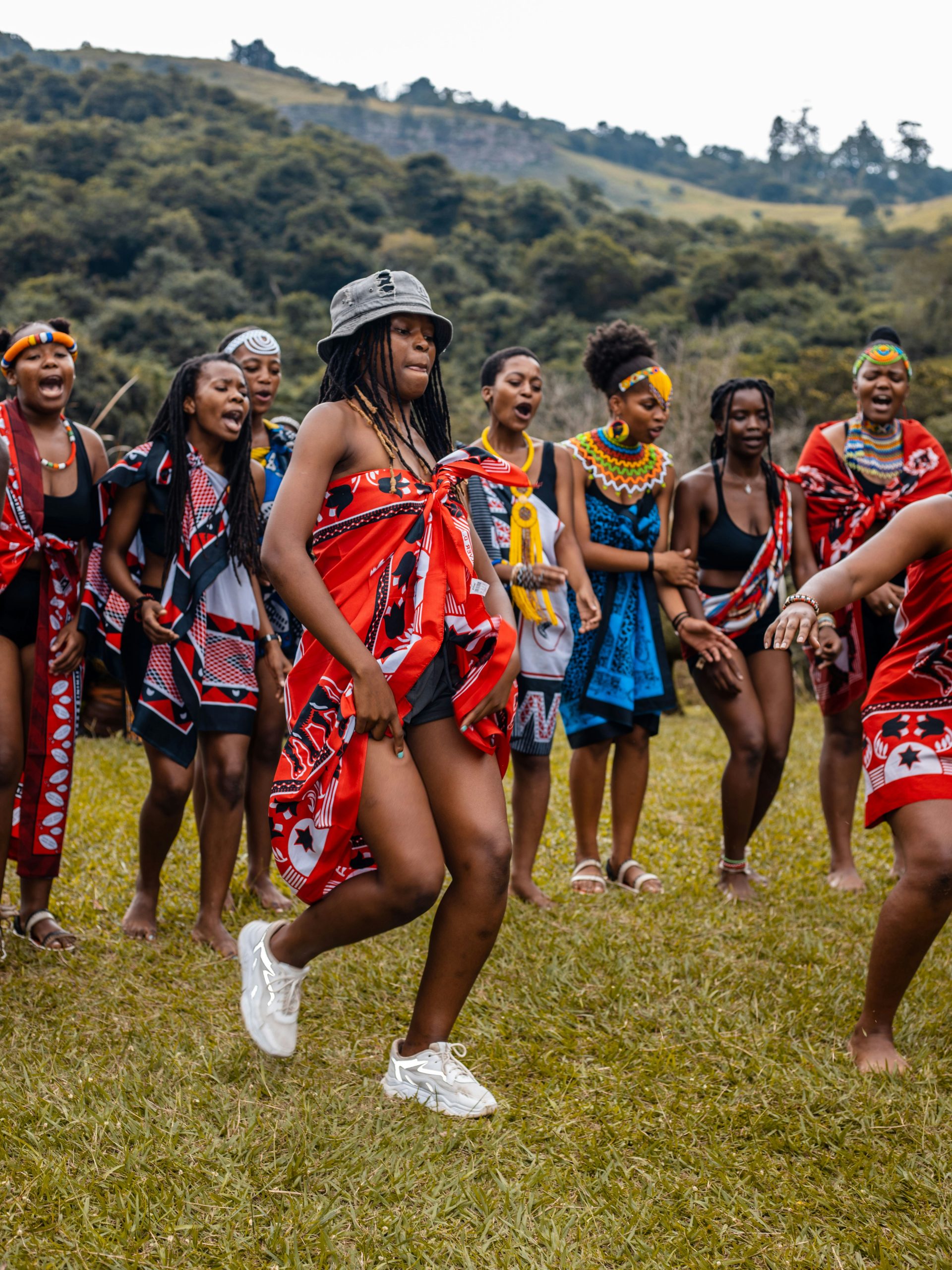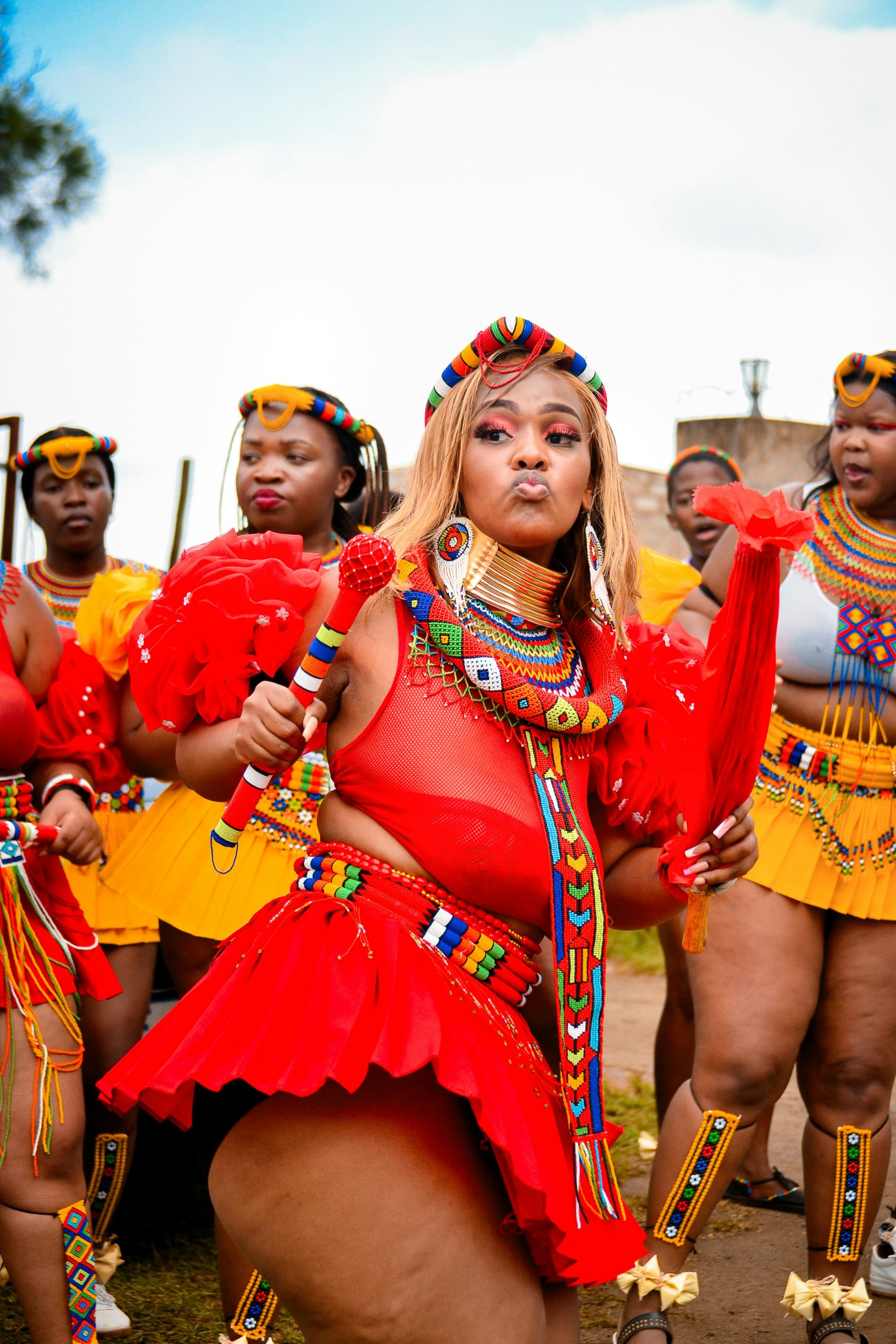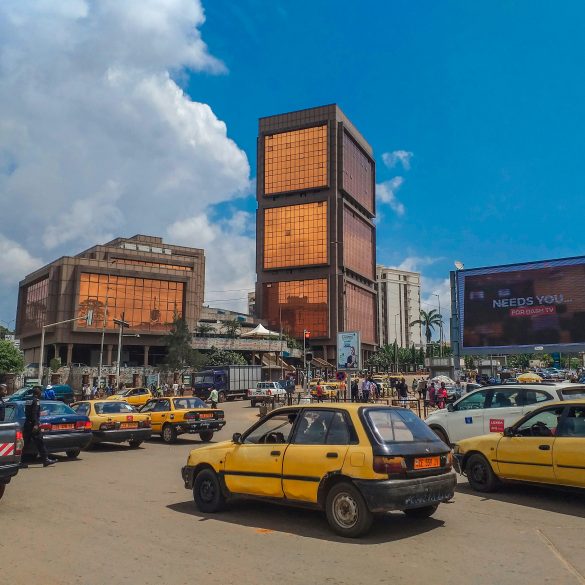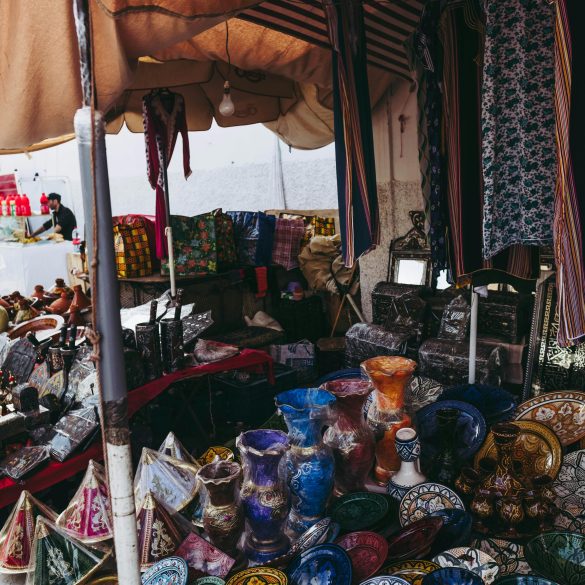ثقافة الزولو مقابل ثقافة الخوسا: نظرة متعمقة على التراث الغني لجنوب أفريقيا
أثناء تجوالي في شوارع جوهانسبرغ النابضة بالحياة العام الماضي، أذهلني التنوع المذهل للثقافات الجنوب أفريقية، والذي عُرض بفخر في كل شيء، من الأزياء التقليدية إلى الحوارات متعددة اللغات التي دارت حولي. أكثر ما أذهلني هو رؤية كيف تحافظ مجتمعات الزوسا والزولو على هوياتها الثقافية المتميزة، بينما تُسهم في النسيج الجميل لجنوب أفريقيا الحديثة.
العلاقة بين ثقافتي الزولو والخوسا تتجاوز مجرد المقارنة، فهي تتعلق بفهم أمتين فخورتين بتاريخهما العريق ولغتيهما المتشابكتين وتقاليدهما العميقة. تنتمي كلتا الثقافتين إلى جماعة نغوني العرقية الأوسع، ومع ذلك فقد طورت كل منهما خصائص فريدة تستحق كل تقدير واحترام.
لمحة ثقافية عن جنوب أفريقيا
تعترف جنوب أفريقيا بـ 11 لغة رسمية، حيث يتحدث لغة الزولو 22.7% من السكان (حوالي 12 مليون متحدث) ولغة الخوسا 16.0% (حوالي 8.2 مليون متحدث)، مما يجعلهما اللغتين الأصليتين الأكثر انتشارًا في البلاد.
الأسس التاريخية: فهم الأصول الثقافية
يعكس التطور التاريخي لثقافتي الزولو والخوسا قرونًا من الهجرة والاستيطان والتطور الثقافي في جنوب أفريقيا. أكثر ما يلفت انتباهي في دراسة هذه التواريخ هو كيف طورت كلتا الثقافتين أنظمة سياسية متطورة، وتقاليد شفوية غنية، وهياكل اجتماعية معقدة قبل الاستعمار الأوروبي بزمن طويل.
استقر شعب الزوسا تقليديًا في منطقة كيب الشرقية، وأسسوا ما يُعرف بمملكة الزوسا عبر سلسلة من المشيخات. ووفقًا لبحث تاريخي أجرته جامعة كيب تاون،1نظّم مجتمع الكوسّا نفسه حول مبادئ أوبونتو واحترام حكمة الأجداد. لطالما وجدتُ من المثير للاهتمام كيف تُركّز ثقافة الكوسّا على بناء التوافق واتخاذ القرارات المجتمعية، وهي قيم لا تزال تُؤثّر على العمليات الديمقراطية في جنوب أفريقيا حتى اليوم.
في غضون ذلك، تبلورت الهوية الثقافية الزولوية بقوة خلال أوائل القرن التاسع عشر في ظل قادة مثل شاكا زولو. وقد أدى تشكيل مملكة الزولو إلى ظهور ما يصفه المؤرخون بأنه إحدى أقوى المنظمات العسكرية والسياسية في أفريقيا.2ما يجذبني في تاريخ الزولو هو كيف يُظهِر الاستراتيجيات العسكرية المتطورة والابتكارات الاجتماعية التي نشأت من القيادة الأفريقية الأصلية.
بنية اللغة: جمال اللغتين الإيزوسا والإيزولو
بعد محاولتي تعلم عبارات أساسية في كلتا اللغتين خلال رحلاتي، أستطيع أن أشهد شخصيًا على تعقيد وجمال هذه الأنظمة اللغوية. تنتمي كل من اللغتين الإيزيخوسا والإيزولو إلى عائلة لغات نغوني، وتشتركان في هياكل نحوية متشابهة مع الحفاظ على خصائص مميزة تعكس منظورهما الثقافي الفريد.
الفرق الأبرز يكمن في أصوات النقر الساكنة. تُدمج لغة إيزيخوسا ثلاثة أصوات نقر مميزة - النقرة السنية (c)، والنقرة الجانبية (x)، والنقرة السنخية (q) - بينما تستخدم لغة إيزيزوولو النقرات بشكل أقل. عندما سمعتُ متحدثي لغة زوسا الأصليين لأول مرة في محادثة، بصراحة، انبهرتُ بالتكامل الإيقاعي لأصوات النقر هذه في أنماط الكلام الطبيعية.
| السمة اللغوية | إيسيخوسا | إيسيزولو | الأهمية الثقافية |
|---|---|---|---|
| انقر على الحروف الساكنة | ثلاثة أنواع (ج، س، ق) | استخدام محدود | يعكس الاتصال اللغوي التاريخي |
| أنظمة التحية | "مولو" (غير رسمي) | "ساوبونا" (أراك) | يؤكد على التقدير والاحترام |
| شعر المديح | تقليد إيزيبونغو | تقليد إيزيبونغو | مركزية الهوية والتاريخ |
| رواية القصص | روايات إينتسومي | قصص إيزينجانيكواني | يحافظ على الحكمة والقيم |
ما يذهلني حقًا في كلتا اللغتين هو نهجهما في سرد القصص والتراث الشفهي. بحث من جامعة كوازولو ناتال3 يوضح كيف يدمج كل من اللغتين الإيزوسا والإيزولو هياكل سردية معقدة تؤدي وظائف متعددة: الترفيه والتعليم والحفاظ على الثقافة.
رؤية تعلم اللغة
تستخدم كلتا اللغتين الدمج اللغوي، أي إضافة بادئات ولواحق إلى الكلمات الجذرية لتكوين المعنى. وهذا يُنشئ تواصلًا دقيقًا للغاية، حيث يمكن للكلمات المفردة التعبير عن مفاهيم معقدة قد تتطلب جملًا كاملة في اللغة الإنجليزية. أتذكر أنني واجهت صعوبة في فهم هذا المفهوم في البداية، لكنني الآن أُدرك كيف يعكس النهج المتطور للغتين في التعبير عن العلاقات والسياق.
الزي التقليدي: رموز الهوية والفخر
للملابس التقليدية في ثقافتي الزولو والخوسا أغراضٌ تتجاوز مجرد الجماليات، فهي تعكس المكانة الاجتماعية، والفئات العمرية، والحالة الاجتماعية، والانتماء الثقافي. بعد أن حضرتُ احتفالاتٍ ثقافية للزوسا والزولو، شهدتُ بنفسي كيف يُنشئ الزي التقليدي روابط قوية بين الأفراد وتراثهم.
يختلف الزي التقليدي لشعب الزهوسا اختلافًا كبيرًا باختلاف الجنس والعمر والمناسبة. غالبًا ما يتميز الزي التقليدي للنساء بزي أومبهاكو المميز، الذي يتميز بأنماطه الهندسية وألوانه الترابية. أكثر ما أدهشني خلال ملاحظاتي هو أن هذه الأنماط ليست مجرد زينة، بل تحمل معانٍ مرتبطة بعشيرة من ترتديها ومكانتها الاجتماعية ومسيرتها الشخصية.
- الزي التقليدي النسائي الخوسا: فساتين أومبهاكو مزينة بأعمال خرزية معقدة، غالبًا باللون الأسود والأبيض والأصفر
- الزي التقليدي للرجال من قبيلة زوسا: ملابس من جلود الحيوانات مع بطانيات مميزة وإكسسوارات من الخرز
- الإضافات الاحتفالية: أغطية رأس ومجوهرات متقنة للمناسبات الخاصة
- التعديلات المعاصرة: تفسيرات حديثة تحافظ على العناصر التقليدية

في الوقت نفسه، يُبرز الزي التقليدي للزولو ألوانًا زاهية وتصاميم مميزة تعكس تراثهم العسكري العريق. يُظهر التباين بين الملابس اليومية والزي الاحتفالي النهجَ الراقي الذي تتبعه ثقافة الزولو في التواصل البصري. خلال حضوري مهرجانًا ثقافيًا للزولو، أدهشتني الدقة والرمزية الواضحة في كل عنصر من عناصر الزي التقليدي.
وفقًا للدراسات الثقافية من جامعة زولولاند4يمثل خرز الزولو أحد أكثر أنظمة الترميز اللوني تطورًا في أفريقيا للتواصل. تنقل تركيبات الألوان المختلفة رسائل محددة حول المشاعر والعلاقات والظروف الاجتماعية، مما يخلق لغة بصرية تُكمّل التواصل اللفظي.
الاحتفالات والممارسات الثقافية: الاحتفال بمرور الحياة
تعكس الممارسات الاحتفالية لكلٍّ من ثقافتي الزولو والخوسا روابط روحية عميقة مع الأسلاف والمجتمع والعالم الطبيعي. وما يُثير إعجابي أكثر هو كيف تؤدي هذه الاحتفالات وظائف متعددة: فهي تُشير إلى تحولات حياتية مهمة، وتُعزز الروابط المجتمعية، وتنقل المعرفة الثقافية إلى الأجيال الشابة.
لمراسم التنشئة أهمية خاصة في كلتا الثقافتين، وإن كانت تتجلى بشكل مختلف. يمثل تنشئة الذكور من قبيلة زوسا (أولوالوكو) تحولاً روحياً واجتماعياً معقداً، تعلمتُ أنه يتطلب مشاركة مجتمعية عميقة وأنظمة معرفية عريقة. يتجاوز هذا الاحتفال الجوانب المادية بكثير ليشمل التربية الأخلاقية، ونقل الثقافة، والتطور الروحي.
- مرحلة التحضير: أشهر من إعداد المجتمع والاستعداد الروحي
- الفترة الاحتفالية: التعليم الثقافي المكثف والترابط المجتمعي
- إعادة الإدماج: الاعتراف الرسمي بالوضع الاجتماعي الجديد داخل المجتمع
- المسؤولية المستمرة: الالتزام مدى الحياة بالحفاظ على الثقافة والخدمة المجتمعية
تُظهر احتفالات الزولو، وخاصةً رقصة القصب (أوملانجا) واحتفالات بلوغ سن الرشد، التزامًا مماثلًا بالاستمرارية الثقافية مع التركيز على المشاركة المجتمعية والتواصل التاريخي. بحث من مركز الدراسات الأفريقية.5 يسلط الضوء على كيفية تكيف هذه الاحتفالات مع الظروف المعاصرة مع الحفاظ على وظائفها الثقافية الأساسية.
تتضمن مراسم الزواج في كلتا الثقافتين مفاوضات عائلية مطولة، وتبادلًا للهدايا، واحتفالات مجتمعية قد تمتد لأيام عديدة. بعد أن شهدتُ أجزاءً من احتفالات زفاف كلٍّ من الزولو والخوسا، يُدهشني باستمرار كيف تُعزز هذه المناسبات ليس فقط الاتحاد بين الأفراد، بل أيضًا الروابط بين العائلات الممتدة والمجتمعات بأكملها.
ملاحظة حول الحساسية الثقافية
من الضروري إدراك أن العديد من الطقوس التقليدية تبقى مقدسة وخاصةً بأفراد المجتمع. وبينما ترحب كلتا الثقافتين بالاهتمام والتعلم المبني على الاحترام، فإن بعض جوانب الممارسة الثقافية تتطلب دعوةً وتحضيرًا مناسبًا. هذا الاحترام للحدود الثقافية يعزز في الواقع التفاهم بين الثقافات وبناء العلاقات.
التعبير الثقافي المعاصر: التقليد يلتقي بالابتكار
من أكثر الجوانب إثارةً في ثقافتي الزولو والخوسا المعاصرتين هو مشاهدة كيف تتكيف القيم والممارسات التقليدية مع الظروف الحديثة دون أن تفقد طابعها الجوهري. من خلال مشاهداتي للتعابير الثقافية الحضرية واحتفالات المجتمعات الريفية، أرى أمثلةً نابضةً بالحياة على الابتكار الثقافي الذي يُكرّم الماضي ويحتضن المستقبل.
تُجسّد الموسيقى والأزياء والأدب الجنوب أفريقي الحديث إبداعًا مذهلاً نابعًا من التقاليد الثقافية. يُظهر فنانون مثل ثانديسوا مازواي (من حضارة زوسا) وليدسميث بلاك مامبازو (من حضارة الزولو) كيف يمكن للأشكال الموسيقية التقليدية أن تتطور مع الحفاظ على أهميتها الروحية والثقافية. وقد ساهم النجاح العالمي لهذين الفنانين في تعريف ملايين الناس حول العالم بجمال وتعقيد الثقافات الأصلية في جنوب أفريقيا.



